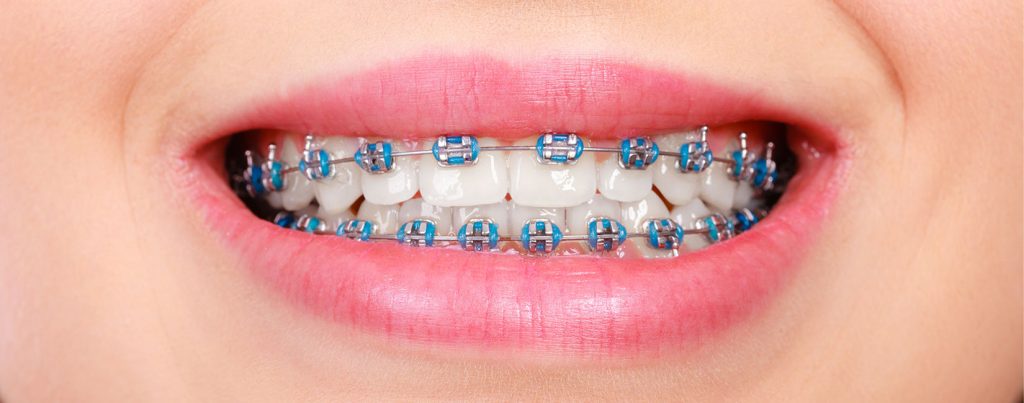If you have been referred to an orthodontist by your dentist, you may have some questions about orthodontics. Continue reading for answers to some of the most common questions about orthodontics.
- Who is an Orthodontist?
- What is Orthodontics?
- What are the Benefits of Orthodontic Treatment?
- What’s the Best Time to Consult with an Orthodontist?
- What are Braces?
- What are Signs that Braces May be Needed?
- How do Braces Work?
- Do Braces Hurt?
- What Type of Food Should I Avoid When Wearing Braces?
- How Long Will my Treatment Take?
- What are Orthodontic Emergencies?
- Do I Still Need to See my Regular Dentist?
- Do I Need to Brush my Teeth More Often if I Have Braces?
- Can I still play sports and music with braces?
Who is an Orthodontist?
Orthodontists are dental specialists who have received two to three years of additional training in an advanced program after dental school. They are the specialists to treat the alignment of the teeth and jaw.
What is Orthodontics?
Orthodontics is the dental specialty that addresses the diagnosis, prevention and treatment of mispositioned teeth and jaws. Orthodontics is used to address misaligned bite patterns and even modifications of facial growth.
What are the Benefits of Orthodontic Treatment?
One of the first things people notice about you when they meet you is your smile and your teeth. Not only are your teeth important for appearance purposes, but they are important for your general health and wellbeing, as well. There are many benefits of orthodontic care.
The most obvious benefit is having your teeth straightened. A better-looking smile can make you feel better about yourself. Instead of hiding your teeth or feeling self-conscious about them, you can feel confident in the look of your smile. Ultimately, this can also significantly improve your mental health.
Orthodontics can also improve jaw alignment. Poor jaw alignment can cause painful TMJ as well as problems with eating.
Another benefit of pursuing orthodontic care is that your oral hygiene can be improved drastically. Food is less likely to get trapped between teeth that are properly aligned; ensuring that the teeth are straight and evenly spaced can prevent cavities or periodontal disease, which is a serious infection in the gums.
What’s the Best Time to Consult with an Orthodontist?
The American Association of Orthodontists currently recommends that a child receives an orthodontic check up no later than age 7. At this age, orthodontists can identify potential problems with jaw growth and examine the alignment and space for permanent teeth. At this point, there are also typically still some baby teeth present, so treatment can be very effective in preventing future problems.
What are Braces?
Braces are a device used by an orthodontist to help you improve the look and feel of your smile. Braces work over time to apply pressure and improve the alignment of the teeth and the bite. There are several different types of braces to choose from, including:
Metal Braces: Metal braces are the traditional type of braces that have been around for just over two hundred years. Advances in the dental industry have made metal braces notably less noticeable, faster, more comfortable, and more effective. Metal brackets are applied directly to the teeth, connected by wire, and secured with elastic ties which are available in many colors. The teeth are moved by having small tightening adjustments made to the wire on a regular basis.
Ceramic Braces: Ceramic braces are made of tooth colored material so they are less visible. Ceramic braces work the same way that metal braces do, but are a good choice for patients who prefer a more discreet look during treatment.
Invisible Braces: Invisible braces are most commonly known by the brand name Invisalign. Clear aligners are popular for many reasons; they are removable, make dental hygiene easier, can provide faster treatment in some instances, and can also require shorter or less frequent visits to the orthodontist. They are effective for many common orthodontic issues; your orthodontist can discuss whether they would be appropriate for your needs.
What are Signs that Braces May be Needed?
The signs that braces are needed can vary depending on age, overall health, and the amount of orthodontic correction needed.
Adult braces are becoming increasingly common. Signs that indicate that an adult may need braces include:
- Visibly crooked or crowded teeth
- Teeth that don’t align with each other when the mouth is at rest
- Difficulty pronouncing certain sounds
- Frequent biting of the tongue or cheek
- Clicking in the jaw
- Pain during or after chewing
- Difficulty with flossing between teeth
Signs that a child may need braces can be identified even early on when baby teeth are present. If baby teeth are crowded or crooked, it can be a sign that braces will be needed in the future. Other signs include breathing through the mouth, teeth that don’t come together even when the mouth is shut completely, biting of the cheek or tongue or cutting the roof of the mouth, thumb sucking or pacifier use after age 2 or teeth that are crooked or crowded.
How do Braces Work?
Braces work by exerting pressure on the teeth to change their position and bring them into proper alignment over a period of time.
Do Braces Hurt?
Braces can cause discomfort when first applied and possibly after a tightening adjustment. They can also cause some pain if a wire or bracket is poking into the cheek or gum. Invisible aligners can also be uncomfortable at times; usually when a patient is moving into the next set of aligners during the treatment.
What Type of Food Should I Avoid When Wearing Braces?
While wearing braces, it is a good idea to avoid certain foods that could cause damage to the braces or get stuck in the appliance. Your orthodontist may ask you to avoid very hard or crunchy foods – as well as very chewy or sticky foods. You should also avoid biting into hard foods such as apples; instead, try cutting them into smaller bite-size pieces.
How Long Will my Treatment Take?
The length of time that orthodontic treatment takes varies from person to person. It can be as short as 3-6 months for more minor alignment problems to 24 months for more complicated treatment plans.
What are Orthodontic Emergencies?
Orthodontic emergencies can arise occasionally, necessitating a visit to the orthodontist outside of your regularly-scheduled visits. Some common examples of orthodontic emergencies include broken brackets or wires, food trapped in the braces, and a tooth becoming knocked out of position. You will be provided with a number to call in the case of an emergency.
Do I Still Need to See my Regular Dentist?
Yes; in order to maintain optimal oral health, it is important to visit your primary dentist every six months for checkups and cleaning.
Do I Need to Brush my Teeth More Often if I Have Braces?
Yes, you will be required to brush more frequently, as food particles are more likely to get stuck in your braces. Most orthodontists recommend brushing 30 min after every meal in addition to morning and night for two consecutive minutes. You may also be instructed to brush after certain colored drinks or snacks to prevent staining.
Can I still play sports and music with braces?
Braces are not a problem for most people, and you can still participate in any sports activities or play musical instruments. However, wearing a mouthguard while playing contact sports is recommended to protect your teeth and braces.
Orthodontist in South Gate, CA
Braces are an excellent way to improve the look of your smile and the function of your teeth and jaws. Here at Reza Dental care, we strive to provide the best orthodontic care in South Gate, California. We hope this article has answered many of your questions, but please do not hesitate to contact us if you have more. We are eager to talk with you about your orthodontic needs!
For more information about the benefits of orthodontic treatment or to get scheduled for an appointment in our South Gate dental office, book an appointment online or give us a call at 323-457-8787.

